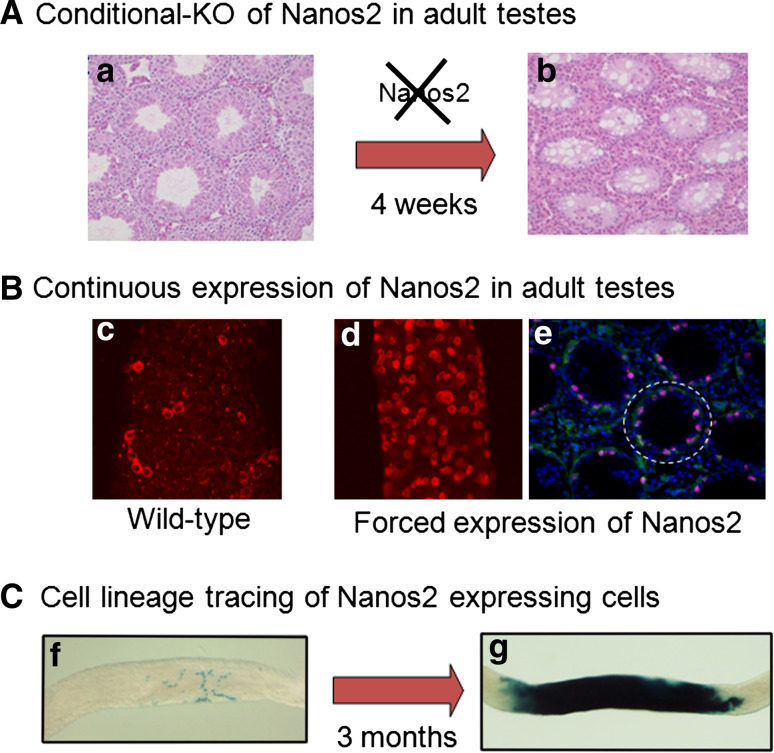Fig. 3.
Genetic experiments that demonstrate the function of the Nanos2 in spermatogonial stem cells in the adult mouse testes. A The conditional knockout of the Nanos2 gene was induced by TM injection of 4-week-old male mice containing a floxed Nanos2 and ERT2Cre (a). After 4 weeks, almost all of the germ cells were depleted from the seminiferous tubules (b). B The continuous expression of Nanos2 was achieved by crossing CAG-floxed CAT-Nanos2 transgenic and Nanos3-cre mice. Nanos2 expression is maintained continuously in all germ cells of the progeny from the embryonic stages. In the wild-type male testes, the number of Nanos2-positive cells (red) is low (c). However, these cells are markedly increased and occupy the entire tubular surface in the induced testes (d). The forced expression of Nanos2 (green) results in the upregulation of PLZF (magenta), a marker of undifferentiated spermatogonia, including stem cells (e). C A cell lineage tracing experiment conducted by crossing a Nanos2-MCM [MerCreMer, a tamoxifen (TM) inducible Cre] mouse with a Rosa26 reporter mouse. Following the transient administration of TM in the 6-week-old male progeny, β-gal activity was detectable at 7 weeks (f) and 18 weeks (g). The presence of β-gal-positive patches that contained spermatogenic germ cells at all stages of development indicates that Nanos2 is expressed in the stem cell population

